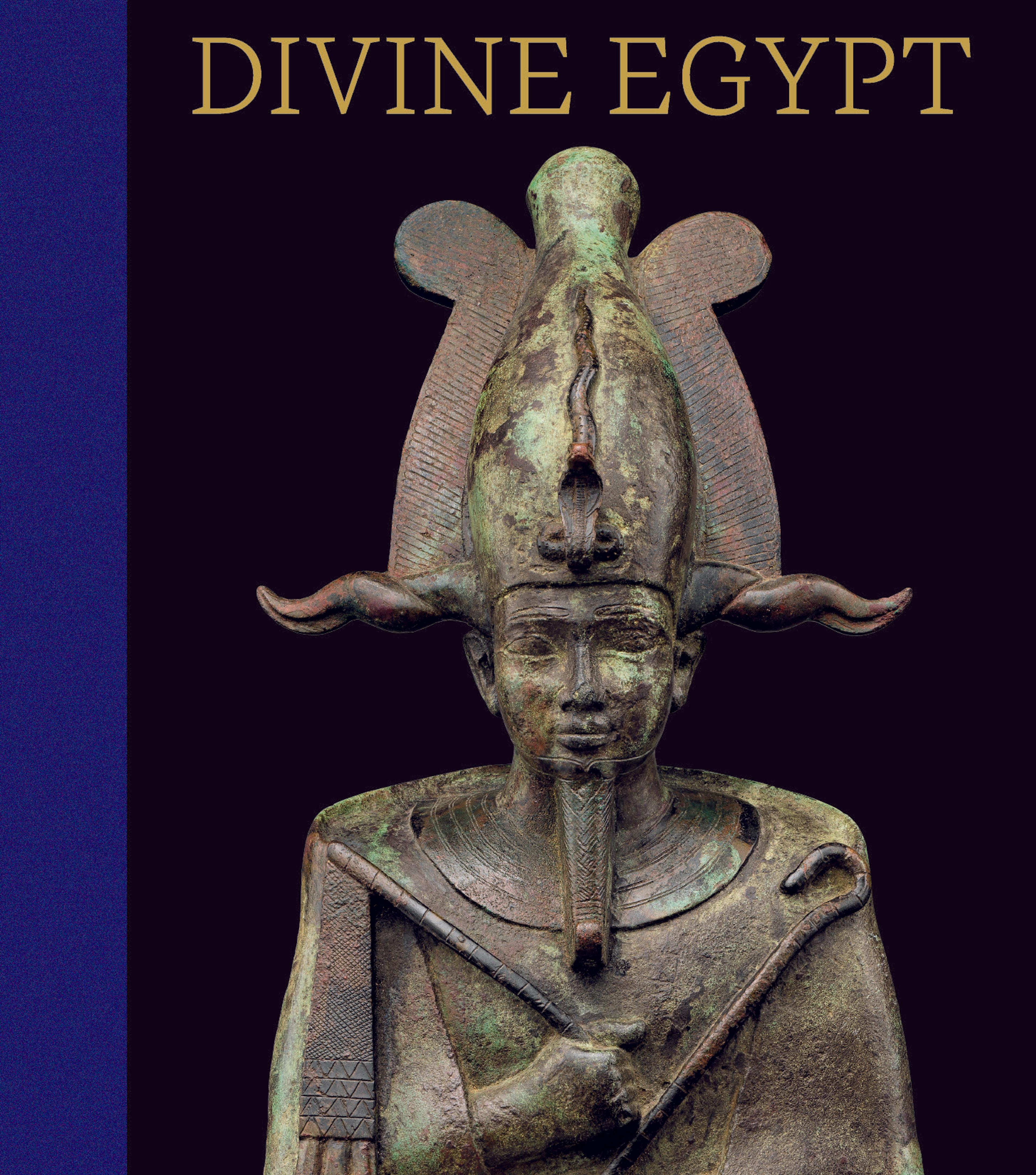Bes-image Rattle
This Bes-image represents the beneficent Egyptian domestic god with his typical leonine face, dwarf body, and tail. Holes at the top of his feather crown and in his ears held rattling elements. The god extends a dom nut to a baby in his arms with Bes-like features. Monkeys are seated around his legs and alongside his crown. Behind his feathers is the incised figure of a bound oryx.
The Bes-image is part of a repertoire of figures created in a distinctive spotted faience from dynasty 22 into dynasty 26. The center of production was the eastern Delta, in particular Bubastis and Tanis; this was an area where Near Eastern peoples had long been interwoven in the population; at this time it was also a center for the settlement of Libyan tribal peoples. Possibly these conditions influenced this particular production.
Through their appearance, the figures all allude to the goddess Bastet. In particular, many details evoke the myth termed "The Return of the Faraway Goddess." The feline / leonine Bastet was angry with the god Re and left Egypt for Nubia. Re wanted her back again, so he sent the god Thoth, who, taking the form of a monkey, lured her back with fables. Bes, musicians and dancers accompanied the train of the returning goddess, whose arrival brought the return of good fortune to Egypt. Figures of Bes (2015.11; 04.2.103), the cats (04.2.119, 04.2.120, 21.6.61), the monkeys (44.4.17), the nude females with ‘Nubian’ hairstyles (66.99.71), and the musicians (89.2.217, 17. 194.2441, 17.194.2459, 41.6.7) all relate to this tale; the figure with a conical ‘foreign’ cap carrying a vessel of beer (86.1.55) and the bound oryx behind the feathers of the Bes-image (2015.11) both allude to controlling the goddess’s dangerous nature.
The Bes-rattle must have been used in a ritual performances, and Bes’s known role as a protector of women and childbirth suggests the rituals addressed such concerns. Bastet, too, had a role as the nurse of a divine child king, and the allusions to her stories may have invoked her power for similar ends.
The Bes-image is part of a repertoire of figures created in a distinctive spotted faience from dynasty 22 into dynasty 26. The center of production was the eastern Delta, in particular Bubastis and Tanis; this was an area where Near Eastern peoples had long been interwoven in the population; at this time it was also a center for the settlement of Libyan tribal peoples. Possibly these conditions influenced this particular production.
Through their appearance, the figures all allude to the goddess Bastet. In particular, many details evoke the myth termed "The Return of the Faraway Goddess." The feline / leonine Bastet was angry with the god Re and left Egypt for Nubia. Re wanted her back again, so he sent the god Thoth, who, taking the form of a monkey, lured her back with fables. Bes, musicians and dancers accompanied the train of the returning goddess, whose arrival brought the return of good fortune to Egypt. Figures of Bes (2015.11; 04.2.103), the cats (04.2.119, 04.2.120, 21.6.61), the monkeys (44.4.17), the nude females with ‘Nubian’ hairstyles (66.99.71), and the musicians (89.2.217, 17. 194.2441, 17.194.2459, 41.6.7) all relate to this tale; the figure with a conical ‘foreign’ cap carrying a vessel of beer (86.1.55) and the bound oryx behind the feathers of the Bes-image (2015.11) both allude to controlling the goddess’s dangerous nature.
The Bes-rattle must have been used in a ritual performances, and Bes’s known role as a protector of women and childbirth suggests the rituals addressed such concerns. Bastet, too, had a role as the nurse of a divine child king, and the allusions to her stories may have invoked her power for similar ends.
Artwork Details
- Title: Bes-image Rattle
- Period: Third Intermediate Period
- Date: ca. 1070–664 BC
- Geography: From Egypt
- Medium: Faience
- Dimensions: H. 21.6 × W. 8.6 × Th. 1.7 cm (8 1/2 × 3 3/8 × 11/16 in.)
- Credit Line: Purchase, 2007 Benefit Fund and Lila Acheson Wallace and Diane Carol Brandt Gifts, 2015
- Object Number: 2015.11
- Curatorial Department: Egyptian Art
More Artwork
Research Resources
The Met provides unparalleled resources for research and welcomes an international community of students and scholars. The Met's Open Access API is where creators and researchers can connect to the The Met collection. Open Access data and public domain images are available for unrestricted commercial and noncommercial use without permission or fee.
To request images under copyright and other restrictions, please use this Image Request form.
Feedback
We continue to research and examine historical and cultural context for objects in The Met collection. If you have comments or questions about this object record, please contact us using the form below. The Museum looks forward to receiving your comments.
